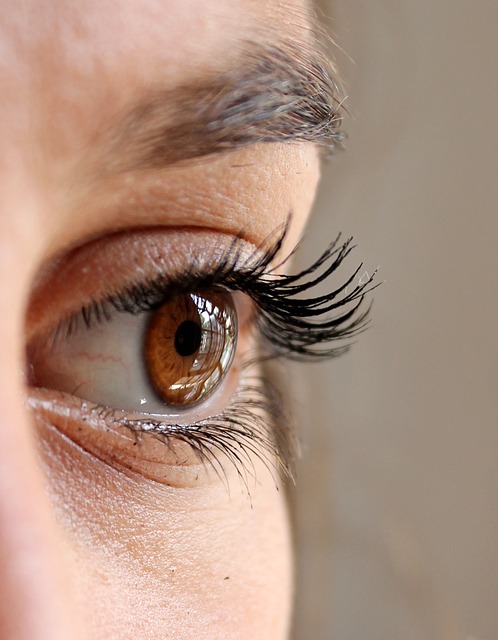Eye Colour Explained
You've probably heard from your parents that the human eyes are the "gateway to the soul." And, if you've ever stared deeply into another's eyes, you can probably understand why so many people agree with that statement. Indeed, According to Psychology Today psychologists are now revealing how the human eyes are key indicators of a person's authentic emotional state. We can tell when someone is sad, faking a smile, or angry simply by looking into their eyes.
Besides giving us a sense of personal autonomy and identity, our eye colours often link us to our genetic ancestors. Although we all probably know that our fingerprints are unique, according to Bayometric our iris pattern is more unique than fingerprints.
Although you may choose to change your natural eye colour with coloured contact lenses for fun, you can never escape your "true colours." In this brief article, we'll take a look at both the most common, and the rarest eye colours, and explain a bit about the history and chemistry behind each pigmentation.
Brown Eyes

One interesting thing you learn once you start studying eye colours is that everyone's eyes are actually brown. That's right, even if you have the bluest of blue eyes, deep down they are actually just a different shade of an original "brownness." The reason for this has to do with the pigment melanin (which comes from the Greek word melas, meaning "black" or "dark"). Melanin is more commonly associated with skin or hair colour, but it also has an enormous impact on our eye pigmentation.
You see, whenever we talk about "eye colour," we're really just talking about how light strikes the topmost layer of the iris. The topmost layers of your irises have different amounts of melanin. Therefore, the more melanin you have, the more likely you will have darker eye colours. So, while "brown eyes" are the most common eye colour, anyone with brown irises can correctly tell a blue-eyed person, "Technically we all have brown eyes. My brown eyes just aren't mutated like yours are!"
Current estimates claim that 70 - 80 per cent of people around the world have brown eyes. Nearly 100 per cent of Africans and Asians have brown eye colour. Depending on the amount of melanin in a person's iris, sometimes people could mistake brown eyes for black eyes. There's actually no such thing as a "black" eye (unless you just got beaten up), but there are varying degrees of "brownness".
Hazel Eyes
Most geneticists consider hazel eyes to be the next most common eye colour around the world. Sometimes people don't break up the distinction between hazel and brown eyes because they consider hazel just a lighter version of brown. Interestingly, if you look closely enough at someone with true hazel eyes, you'll actually see a mixture of yellow and green in their irises. Most people with hazel eyes have larger amounts of melanin on the borders of the iris, but they have less melanin the closer you get to the pupil. Since there are varying degrees of melanin in these people's eyes, hazel-eyed people often identify themselves with brown or green eyes depending on the overall darkness of their eyes. Indeed, depending on the lighting, a person with hazel eyes could actually appear to have blue eyes. Percentage-wise, if you are torn between blue, green, or brown, chances are you have either hazel or brown eyes. Scientists believe around 5 to 8 per cent of the global population has hazel eyes.
Green Eyes
As mentioned above, people often confuse hazel eyes with green eyes (and vice versa). If you are unsure whether you have green or hazel eyes, chances are you have hazel eyes. Current estimates show that only around 1 to 2 per cent of people around the world have green eyes. About 80 per cent of that 2 per cent are Caucasian and come from Europe. Also, most people with green eyes tend to be female.
Although green eyes are super rare, they have been around for quite a long time. We actually have documents going back to the Bronze Age that suggest many people in Siberia had green eyes. Today, it's most common to see green eyes in Iceland, where around 80 per cent of the native born population have either green or blue eyes.
The production of green eyes is quite interesting. People with green eyes have what's called a yellow coloured stroma in their iris. When light hits the irises, a phenomenon known as Rayleigh scattering occurs. Rayleigh scattering refers to the way light waves scatter into tiny molecules when there's less melanin, which tends to make the eyes look blue (since blue tends to scatter more than any other colour). By the way, Rayleigh scattering is often used to explain why the sky appears blue since green-eyed people have less melanin plus a yellow stroma, the yellow mixes with the blue to produce green.
Blue Eyes

While not as rare as green eyes, blue eyes are often the most desirable eye colour on the planet. Perhaps this has to do with all the beautiful blue-eyed celebrities we've been bombarded with on TV and in movies over the past few decades. Stars like Brad Pitt, Reese Witherspoon, and, of course, the late Frank Sinatra are all legendary for their beautiful blue eyes. Since the genes responsible for blue eyes are recessive, however, they are relatively rare unless you were born in an area where this trait is common. Almost everyone in the Balkans region has blue eyes, and many native northern Europeans have blue eyes as well. Today, there are around 8 per cent of people around the world with blue eyes.
As mentioned before in reference to green eyes, blue eyes are caused by a lack of melanin in the iris and the Rayleigh scattering effect. Of course, since blue-eyed people don't have the yellow stroma that green-eyed people have, the colour that appears in their iris is just blue.
Research out of Copenhagen University in Denmark actually claims that everyone who has blue eyes is directly related to one ancestral "founder" who arrived on the scene some 6,000 to 10,000 years ago. Before that time, researchers believed everyone's eyes were brown. The lead geneticist in this study, Hans Eiberg, looked at the genes of people with blue eyes in Turkey, Jordan, India, and Scandinavia. He found that every single person had the exact same gene trait in their DNA: OCA2. This finding led Eiberg to believe everyone who carries the genetic mutation of blue eyes is directly related to each other.
Silver Eyes

Some geneticists consider silver eyes a rare variation of blue eyes. Basically, silver eyes are the same as blue eyes except for the fact that silver eyes have even less melanin. When Rayleigh scattering occurs in these eyes, the resultant colour is an unmistakable "stainless steel" silver. Silver eyes are really only common in Eastern Europe. Even in Eastern Europe, however, the rate of silver eyes is extremely low. There aren't any official estimates, but the percentage of people with silver eyes around the world is probably around the same level as green eyes.
Amber Eyes
One of the rarer variants of eye colour in both Asia and South America is amber. Amber coloured eyes have a medium amount of melanin, but they also have a strange yellowish tinge to them, which distinguishes them from typical brown eyes. This yellow tinge gives amber eyes a kind of golden/copper appearance. The main reason for them giving off this colour is due to a pigment known as lipochrome. Liopchrome is associated with the colours of amber, gold, and green, and can be found in the eyes of a small percentage of humans and some other mammal species. The current global estimate puts amber eye rates around 5 per cent.
Red And Violet
These eye colours are extremely rare and are often the result of albinism, a condition characterised by a lack of pigment in one’s skin, hair and eyes. People with albinism often have very light blue eyes due to the lack of melanin, but in certain lighting conditions, the eyes of a person with albinism can appear red or violet due to the light reflecting off blood vessels in the back of the eye.
Heterochromia Iridum
While green and silver eyes are extremely rare, it's even more rare to have what's called Heterochromia iridum. Kate Bosworth is a good example. This refers to having eyes that are two different colours. Geneticists estimate that only around 0.6 per cent of the global population have two eyes that could be considered completely different colours. It would be more common to have multicoloured eyes. There's no need to worry, however, since Heterochromia iridum is completely harmless and requires no treatment.
Even if you are one of the lucky few with Heterochromia iridium, chances are the two colours you do possess are quite close to each other on the colour spectrum, meaning you might not even notice you have two different eye colours! Of course, you could always fix that by purchasing a pair of coloured contact lenses.
The Worlds Rarest Eye Colours
According to the World Population Review green eyes are the rarest:
- Green Eyes = 2%
- Grey Eyes = 3%
- Hazel Eyes = 5%
- Amber Eyes = 5%
- Blue Eyes = 8 - 10%
- Brown Eyes = 70 - 80%
- Other eye colours = 1%
Can Eye Colour Change With Age?
It’s not uncommon for parents to notice their child’s eye colour changing a few months after they are born. This is especially true for children of European descent who are often born with bright blue eyes that darken over the ensuing months. The reason eye colours usually aren’t set at birth has to do with melanin. Usually, the total amount of melanin isn’t present in our bodies at the moment of birth. Rather, it takes a few years for our melanin levels to reach their maximum level. Since children of European descent have less melanin in their systems anyway, it’s common for whatever little melanin they have to express itself later in life. Although it’s slightly less common, it’s possible for your eyes to change colours as you enter adulthood. Please keep in mind that any eye colour changes later in life could be early warning signs of more serious conditions like glaucoma or Fuchs heterochromic uveitis. Even if you experience no pain with these eye colour changes, it’s a good idea to visit an optometrist to check for these and other sight-robbing conditions.
Can Emotions Alter Eye Colour?
Many people like to believe you can see a person’s emotions just by looking into their eyes, but is that really true? Amazingly, the most up-to-date scientific literature does confirm this long-held belief...sort of. When you experience an intense emotion, your pupils could either dilate or constrict. The change in pupil size could have an effect on your iris colour, but it usually doesn’t cause your iris to change colour. Instead, the drastic change in pupil size makes your eyes appear either darker or lighter depending on the circumstance. One condition that helps illustrate this point is called anisocoria. This usually benign condition refers to two eyes that each have different pupil sizes. It’s the difference in pupil sizes rather than iris pigmentation that makes it appear like an anisocoria patient has two differently coloured eyes. If you need an example of anisocoria eyes, just take a quick look at a pic of late musician David Bowie.
Eye Colour And Sun Exposure
Besides adding a bit of colour to your life, melanin also plays an important role in blocking the sun’s harmful UV rays. So, the darker your eyes, the greater protection you have against diseases related to UV exposure. People with blue eyes are also more prone to intense light sensitivity which could lead to migraines and general eye discomfort. On the flip side, research has shown that people with brown eyes are far more likely to develop cataracts compared with blue-eyed patients. So, no matter what eye colour you’re born with, it’s always a good idea to wear UV-blocking sunglasses when you’re outside.
Cultural And Symbolic Significance
Rare eye colours are almost always depicted with fascination and romantically idealised in literature and film. Across cultures, rare eye colours have often been attributed to mystical or symbolic significance. Green eyes for example have been associated with magic and mystery for a very long time.
Genetic Factors
The genetics of eye colour is very complex and surprisingly not fully understood yet. It's known that eye colour is a polygenic trait, meaning it's influenced by several genes, as opposed to being determined by a single gene. This complexity contributes to the wide range of eye colours found in humans.
The Dos And Don’ts Of Decorative Contacts
Aren’t happy with your natural eye colour? No worries. There are now many decorative contacts on the market that can dramatically transform your iris colour. Some of these cosmetic lenses could change your irises into colours that aren’t even biologically possible! Even if you have 20/20 vision, you need to get a contact lens fitting with a professional optometrist before purchasing cosmetic contact lenses. Non-prescription contact lenses won’t change your vision, but they still need to be fitted properly. In addition to feeling uncomfortable, improperly fitted contacts could scar your cornea over time. Ask your optometrist which brand of decorative contacts they recommend for your contact lens fitting. Once you get a pair of properly fitted decorative contacts, please practice good contact lens hygiene. This means washing your hands before handling contacts, keeping contacts away from tap water, and throwing contacts away after the manufacturer’s due date. It’s also important to remove contacts before showering, swimming, and going to bed. For more helpful tips on contact lens hygiene, check out our easy guide.
A Never-Ending Quest: Research Into Eye Colour
The rarity and beauty of these unique eye colours add to the amazing diversity of humanity. From the mystical pull of green and amber to the striking presence of heterochromia, each of these rare eye colours carries its own unique story and genetic mystery. Understanding and appreciating this diversity not only satisfies our curiosity but also makes our perception of beauty and biology richer.
Geneticists continue to learn more about how eye colour works with each passing year. As technology advances, hopefully, we’ll have a better idea of how eye colour developed over the centuries and how it’s passed on from generation to generation.
In the meantime, the only way to get the eye colour you desire is to pick up a pair of high-quality cosmetic contacts. If you’re interested in using decorative contact lenses, then be sure to schedule an appointment with an optometrist.
Author: John Dreyer Optometrist Bsc(Hons), MCOPTOM, DipCLP
Created: 24 May 2017, Last modified: 7 Jan 2025

